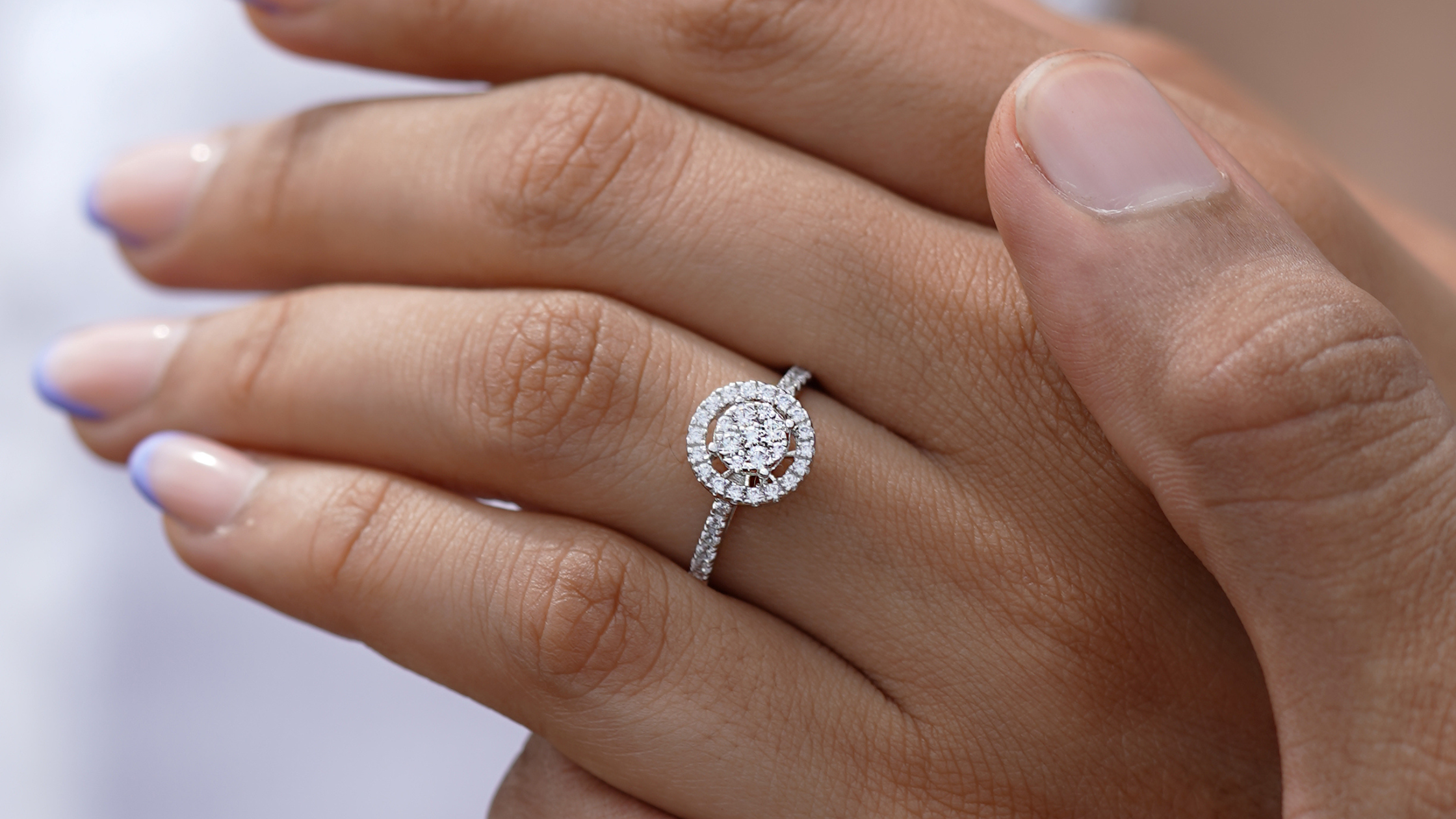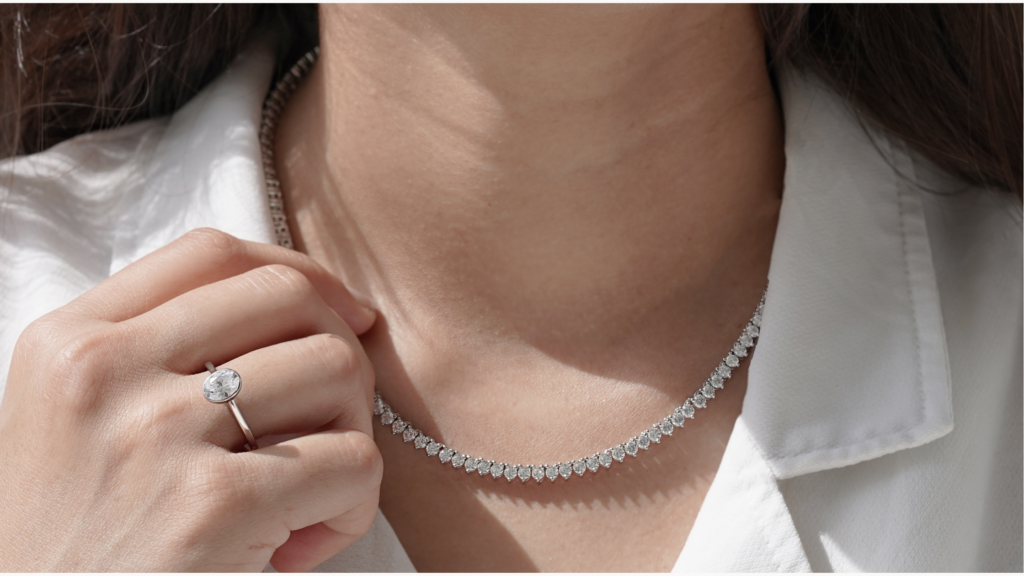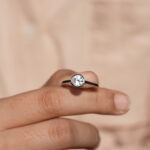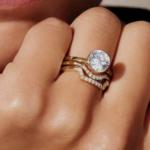DESIGNING THE PERFECT RING: WHY CAD IS GAME CHANGER FOR CUSTOM JEWELRY

Introduction
Custom jewelry has always held a special place in the hearts of those who seek unique, personalized pieces that tell a story. Whether it’s an engagement ring, a wedding band, or a one-of-a-kind heirloom, designing a custom ring is a deeply personal experience. However, traditional jewelry design methods often come with challenges like limited precision, longer turnaround times, and difficulties in making modifications.
Enter Computer-Aided Design (CAD)—a revolutionary technology that has transformed the jewelry industry. By allowing designers to create highly detailed, accurate, and realistic 3D models of rings, CAD has streamlined the custom jewelry process, making it faster, more efficient, and more accessible than ever before. In this blog, we’ll explore how CAD is changing the game for custom ring design and why it’s the future of personalized jewelry.
The Evolution of Ring Design: From Hand-Sketching to CAD
For centuries, jewelry design was a meticulous craft that relied heavily on hand-drawn sketches and wax models. While these methods allowed skilled artisans to create stunning pieces, they also had limitations:
- Hand sketches could only provide a 2D representation of the design, making it difficult to visualize the final piece.
- Wax models required extensive labor and time to carve, with minimal room for error.
- Any design changes meant starting from scratch, increasing costs and production time.
The introduction of CAD software changed everything. Instead of relying on physical sketches and models, jewelers could now create digital 3D models that allowed for precise measurements, easy modifications, and realistic visualizations. This shift has made it possible to bring even the most intricate jewelry designs to life with greater accuracy and efficiency.
What is CAD in Jewelry Design?
Computer-Aided Design (CAD) is a digital technology that enables jewelry designers to create detailed, three-dimensional models of rings and other jewelry pieces before they are physically crafted. Using specialized CAD software such as MatrixGold, Rhino, and JewelCAD, designers can build complex designs with precise measurements, simulate different metal finishes, and even incorporate gemstones in various settings.
With CAD, customers no longer have to rely solely on their imagination—they can see a high-quality digital preview of their ring before it’s ever made. This enhances the customization process, ensuring the final piece meets their expectations.
Benefits of Using CAD for Custom Rings
1. Precision and Accuracy
CAD eliminates human error by allowing designers to create perfectly symmetrical, well-proportioned ring designs. Whether it’s an intricate filigree pattern or a precisely set gemstone, CAD ensures every detail is accurate to the millimeter.
2. Realistic Renderings and Visualization
Unlike traditional sketches, CAD provides photorealistic 3D renderings, allowing customers to see the ring from different angles, in various metal finishes, and with different gemstone options. This helps them make informed decisions before finalizing their design.
3. Faster Turnaround Time
Traditional ring-making methods could take weeks or even months, especially if multiple revisions were needed. With CAD, modifications can be made quickly, reducing production time significantly. This means customers can get their custom rings much faster.
4. Cost-Effectiveness
By catching design flaws early and reducing material waste, CAD helps keep costs under control. Customers also save money by avoiding costly revisions that might arise from hand-crafted errors.
5. Easy Customization and Revisions
One of the biggest advantages of CAD is its flexibility. Customers can tweak their design as many times as needed—whether it’s adjusting the ring size, changing the gemstone shape, or modifying intricate details—without having to start over from scratch.
CAD vs. Traditional Jewelry Design: A Comparison
When comparing traditional jewelry design to CAD-based design, the advantages of modern technology become clear. Traditional methods rely on hand-drawn sketches and wax models, which, while artistic, often lack the precision and flexibility needed for intricate designs. Measurements are done manually, making it challenging to achieve perfect symmetry and proportion. Customization in traditional design is also time-consuming, requiring extensive labor to modify or remake a piece if the customer requests changes. Additionally, visualizing the final ring is difficult, as sketches provide only a 2D representation, leaving room for uncertainty.
On the other hand, CAD offers high precision and accuracy, allowing designers to create symmetrical, well-proportioned rings down to the smallest detail. Customization is much more efficient, as changes can be made digitally without having to restart the entire design process. Customers benefit from realistic 3D renderings that showcase different angles, gemstone placements, and metal finishes, helping them make confident decisions. Turnaround time is significantly faster, and modifications can be implemented seamlessly without additional material costs. Overall, CAD streamlines the custom jewelry process, making it more efficient, cost-effective, and customer-friendly.
The Role of CAD in the Jewelry Manufacturing Process
Once a CAD design is approved, the digital model is converted into a physical wax prototype using 3D printing or CNC milling. This wax model is then used in the lost-wax casting process, where molten metal is poured into the mold to create the final piece.
From there, the ring goes through polishing, gemstone setting, and final finishing to achieve the perfect look. Because the entire process starts with a highly detailed CAD model, the chances of errors or imperfections are minimized, ensuring a flawless final product.
Why CAD is the Future of Custom Jewelry Design?
The use of CAD in jewelry design is only growing. With advancements like virtual reality (VR) previews, artificial intelligence (AI)-assisted design recommendations, and augmented reality (AR) try-ons, CAD is making custom jewelry design more interactive and customer-friendly than ever.
More jewelry brands are adopting CAD because it:
- Enhances the customer experience with high-quality digital previews.
- Speeds up production and revisions.
- Allows for unlimited creativity in design.
Choosing the Right CAD Jewelry Design Partner
To get the most out of CAD jewelry design, it’s essential to work with experienced CAD designers who understand the intricacies of jewelry craftsmanship. When choosing a CAD service, consider:
- Expertise: Look for professionals with a strong portfolio of previous work.
- Turnaround Time: Choose a service that offers quick and efficient delivery.
- Realistic Renderings: Ensure they provide high-quality, lifelike CAD models.
At TCM – The Cad Maker, we specialize in highly realistic jewelry CAD rendering and quick delivery (24-48 hours). Whether you’re a jeweler, a designer, or an individual looking for a custom ring, our expert team ensures you get a stunning and precise design every time.
Conclusion
CAD has truly revolutionized custom jewelry design, making it more accurate, efficient, and accessible. Whether you’re looking to create a timeless engagement ring or a personalized anniversary gift, CAD ensures your vision comes to life with flawless precision and realistic renderings.
If you’re ready to design your dream ring, contact The Cad Maker today for expert CAD jewelry design and rendering services!
Leave a Reply
You May Also Enjoy:
THE ROLE OF 3D RENDERING IN CUSTOM JEWELRY DESIGN
The Cad Maker Introduction Designing custom jewelry has forever been an art. It's the fusion
-
THE ART OF CUSTOM JEWELRY: HOW 3D CAD IS REVOLUTIONIZING DESIGN
February 14, 2025 -
DESIGNING THE PERFECT RING: WHY CAD IS GAME CHANGER FOR CUSTOM JEWELRY
February 27, 2025 -
TOP MATERIALS USED IN CUSTOM RING MANUFACTURING
March 19, 2025





